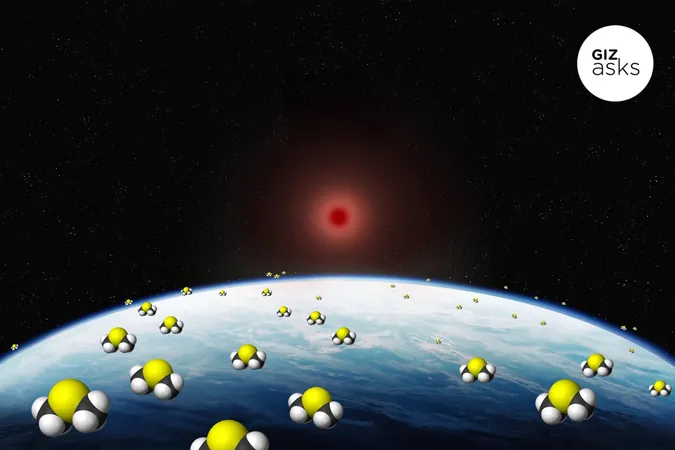
Could We Be on the Brink of Discovering Alien Life? Experts Share Mixed Reactions to New Biosignature Findings
2025-04-23
Author: Ming
A Potential Breakthrough in Astrobiology
In a groundbreaking revelation from the James Webb Space Telescope (JWST), researchers believe they might have detected a hint of dimethyl sulfide (DMS) on the exoplanet K2-18 b, located approximately 120 light-years away. DMS is a molecule primarily produced by marine microbes on Earth, raising thrilling questions about the possibility of life beyond our planet. K2-18 b, theorized to be a Hycean world, is expected to have a steamy, oceanic environment beneath a hydrogen-rich atmosphere.
Cautionary Voices Amid Excitement
Despite the sensational headlines, the scientific community is divided. The report, while intriguing, comes with a statistical confidence of only 3-sigma—promising but not definitive. Thus, many experts express skepticism regarding the claim that this is evidence of extraterrestrial life. What if the DMS-like signal is just a product of unusual, non-biological chemistry?
Expert Insights: What’s Really Happening on K2-18 b?
Oliver Shorttle, a planetary chemist at the University of Cambridge, emphasizes that the findings do not shift our understanding of potential extraterrestrial life significantly. He highlights a series of scientific hurdles that must be overcome, including confirming whether the signal genuinely originates from K2-18 b and ruling out non-biological explanations.
Shorttle points out that given current data, conditions on K2-18 b may be far too extreme for life as we know it—suggesting that any detected DMS might be the result of an inhospitable, sulfur-rich atmosphere rather than biological activity.
Excitement Meets Skepticism
Christopher Glein, a geochemist, acknowledges that this data is compelling but urges caution. He emphasizes the need for more thorough investigation before jumping to conclusions about the presence of DMS or its implications for life. Glein is particularly interested in the unusual chemical processes that could occur on such enigmatic planets.
Meanwhile, Nikku Madhusudhan, an astrophysicist, strikes a balance between optimism and caution, suggesting that while the evidence leans toward potential life, it’s essential to remain open to other explanations. He advocates for further research over the next couple of years to clarify the situation.
Skepticism Over Hasty Conclusions
On the other side of the debate, Ignas Snellen from Leiden University voices concern regarding media hype surrounding the study. He argues that the interpretation of the findings may be exaggerated and criticizes the research team for not adequately considering other molecular sources that could be responsible for the observed spectral anomalies.
Sara Seager, a planetary scientist at MIT, reinforces the notion that without more substantial evidence, K2-18 b should remain a candidate for biosignature exploration rather than a confirmed site of alien life.
What’s Next for Astrobiology?
As excitement mounts over the potential for discovering alien life, the scientific community is navigating a fine line between hope and skepticism. The discourse surrounding K2-18 b underscores the complexities of astrobiology, revealing a fascinating yet challenging journey to confirm or deny the existence of life beyond Earth.
The quest for more data from the JWST and ongoing exploration of exoplanets will undoubtedly continue to illuminate our understanding of the cosmos. For now, K2-18 b serves as a stirring reminder of the intriguing possibilities that await just beyond our world.



 Brasil (PT)
Brasil (PT)
 Canada (EN)
Canada (EN)
 Chile (ES)
Chile (ES)
 Česko (CS)
Česko (CS)
 대한민국 (KO)
대한민국 (KO)
 España (ES)
España (ES)
 France (FR)
France (FR)
 Hong Kong (EN)
Hong Kong (EN)
 Italia (IT)
Italia (IT)
 日本 (JA)
日本 (JA)
 Magyarország (HU)
Magyarország (HU)
 Norge (NO)
Norge (NO)
 Polska (PL)
Polska (PL)
 Schweiz (DE)
Schweiz (DE)
 Singapore (EN)
Singapore (EN)
 Sverige (SV)
Sverige (SV)
 Suomi (FI)
Suomi (FI)
 Türkiye (TR)
Türkiye (TR)
 الإمارات العربية المتحدة (AR)
الإمارات العربية المتحدة (AR)